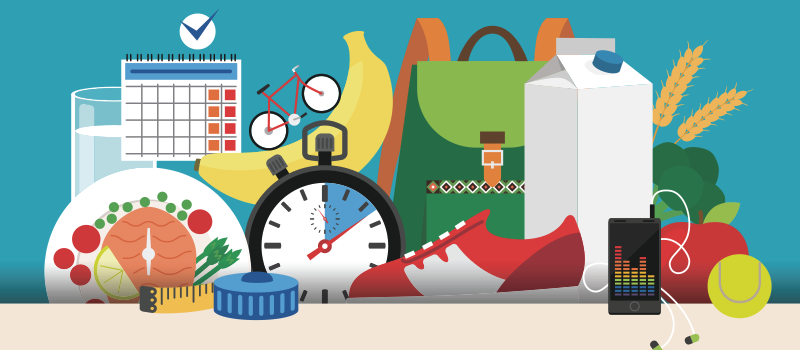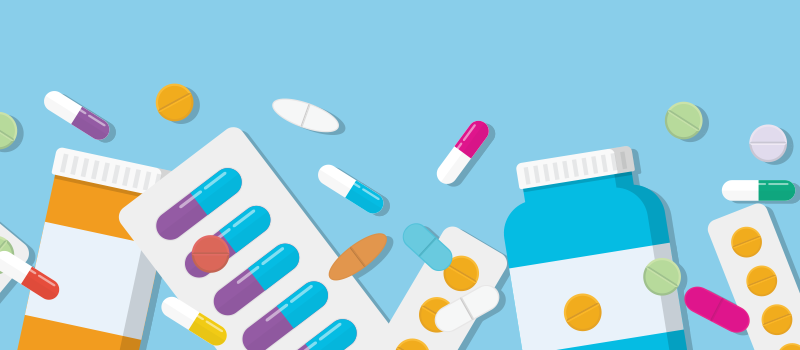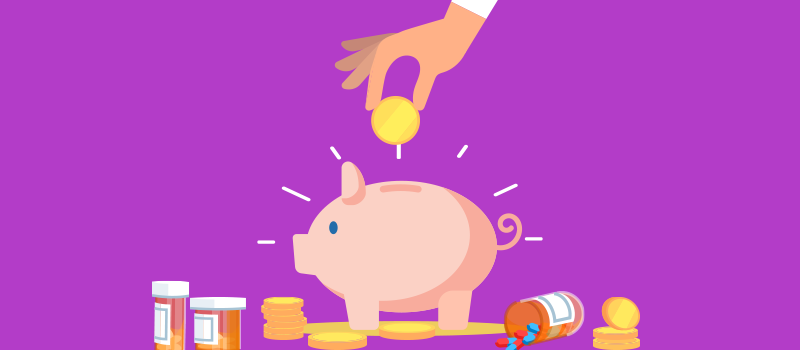What’s the Buzz
The Bee Healthy Blog
What Are the 10 Signs and Symptoms of Low Potassium?

-
Symptoms of low potassium may include extreme fatigue, constipation and abdominal distension, heart palpitations, and problems with skeletal muscles such as weakness, spasms, numbness, tingling, and muscle twitches.
-
In severe cases, you may experience muscle cramps, twitches, weakness, lightheadedness, fainting, low blood pressure, high blood sugar levels, heart palpitations, difficulty breathing, decreased brain function, and excessive urination and thirst.
Potassium is one of the body’s major electrolytes. It plays an important role in normal cell functioning and vital bodily activities, including nerve, muscle, and bone health, heart function, and a healthy digestive system.
The body obtains potassium by absorbing it from food in the digestive tract. The kidneys remove excess potassium from the body through urine. This maintains a normal blood potassium level.
Hypokalemia (low blood potassium levels) or hyperkalemia (too much potassium in the body) can be dangerous. People with hypokalemia (low blood potassium levels) can experience signs and symptoms such as tiredness, constipation, heart palpitations, muscle weakness, tingling, and numbness. Severely low potassium levels can induce irregular heart rhythms. These abnormal heart rhythms can be life-threatening.
Eating potassium-rich foods and taking oral potassium supplements can correct a potassium deficiency; however, you should only take a potassium supplement if it is recommended by your doctor, especially if you have kidney diseases or heart problems.
Please continue reading to learn more about the signs and symptoms of low potassium.
What causes low potassium?
Some of the causes of low potassium levels in the body include:
-
Excessive loss of potassium from the gastrointestinal tract due to severe diarrhea, vomiting, or use of laxatives
-
Excessive sweating
-
Excessive alcohol intake
-
Eating disorders, for example, bulimia nervosa
-
Certain medications, such as diuretics (water pills) that treat high blood pressure and can cause increased loss of potassium in urine
-
Certain antibiotics, corticosteroids, and insulin
-
Hypomagnesemia (low magnesium levels)
-
Adrenal gland disorders, including Cushing’s syndrome and primary aldosteronism
-
Chronic kidney disease and genetic kidney diseases such as Gitelman syndrome and Bartter’s syndrome
-
Digestive disorders such as inflammatory bowel disease (Crohn’s disease and ulcerative colitis)
-
Rare disorders like Liddle syndrome, which is associated with high blood pressure
-
Poor dietary intake of potassium (rare)
-
Excessive sweating
-
Pica (eating non-food items)
What are normal potassium levels?
The normal range of blood potassium levels in adults is between 3.5 and 5.2 milliequivalent per liter (mEq/L) or millimoles per liter (mmol/L). Potassium levels between 3 and 3.5 mEq/L are considered low. Levels below 3 mEq/L are considered dangerously low potassium levels (severe hypokalemia) requiring treatment.
Normal levels of potassium in the urine are usually 20 mEq/L in a random urine sample and 25 to 125 mEq in a 24-hour collection.
How do you feel when your potassium is very low?
Symptoms of low potassium may include:
-
Extreme fatigue (tiredness)
-
Constipation and abdominal distension
-
Heart palpitations
-
Weakness and spasms in the skeletal muscles
-
Numbness and tingling
In severe cases, the following symptoms may be present:
-
Muscle cramps
-
Muscle twitches
-
Severe muscle weakness (flaccid paralysis)
-
Lightheadedness
-
Fainting
-
Hypotension (low blood pressure)
-
Hyperglycemia (high blood sugar levels)
-
Arrhythmias (irregular cardiac rhythms)
-
Difficulty breathing
-
Decreased brain function
-
Polyuria (excessive urination)
-
Polydipsia (excessive thirst)
How much potassium should I eat?
The amount of potassium you should eat depends on your age:
| Age | Recommended daily potassium intake |
| Birth to 6 months | 400 milligrams (mg) |
| 7-12 months | 860 mg |
| 1-3 years | 2,000 mg |
| 4-8 years | 2,300 mg |
| 9-13 years (boys / girls) | 2,500 mg / 2,300 mg |
| 14-18 years (boys / girls) | 3,000 mg / 2,300 mg |
| Adults 19+ (men / women) | 3,400 mg / 2,600 mg |
| Pregnant / breastfeeding teenagers | 2,600 mg / 2,500 mg |
| Pregnant / breastfeeding adult women | 2,900 mg / 2,800 mg |
What are good food sources of potassium?
Potassium-rich foods include:
-
Vegetables (potatoes, tomatoes, peas, broccoli, green leafy vegetables like spinach)
-
Fruits (bananas, avocados, oranges, raisins, prunes, dried apricots)
-
Kidney beans, lentils, soybeans, nuts
-
Dairy products (milk and yogurt)
-
Poultry, meat, fish
For example, one raw banana has 425 mg of potassium, one cup of orange juice has 470 mg of potassium, and half a cup of cooked spinach has 420 mg of potassium.
Additional sources of potassium include:
Salt substitutes
Salt substitutes are designed to control excess sodium and often contain potassium as an ingredient. However, you should check with your doctor before taking salt substitutes, as they can result in high potassium levels, especially in people with chronic kidney disease (CKD) or those taking certain medications. Just 1/4 teaspoon of Morton Salt Substitute contains 610 mg of potassium. Find out Why a Low Potassium Diet Is Important for CKD Patients.
Potassium supplements
You can obtain extra potassium by taking a potassium supplement. Potassium is also included in many multivitamins and mineral supplements. Supplements include different salts of potassium, such as potassium chloride, potassium phosphate, potassium citrate, potassium bicarbonate, potassium aspartate, and potassium gluconate. Studies have not found that one of these salts is superior to the others. These supplements typically contain small amounts of potassium, usually less than 100 mg per serving.
How can I check my potassium level at home?
You cannot check your potassium levels at home. Your doctor can order a blood test (serum K levels) or urine test to check potassium levels.
What is the fastest way to cure low potassium?
If your potassium range is below normal on blood tests, your healthcare provider may order further testing to identify the cause and correct it. For example, if you don’t have enough potassium due to persistent vomiting and diarrhea, they will treat the illness and may recommend taking a supplement to provide a temporary boost in potassium levels. If medications are causing your kidneys to eliminate potassium in excess amounts, they may make changes to your treatment regimen.
People with severely low potassium levels can experience irregular heart rhythms. Therefore, a significant decrease in potassium levels may warrant admission to the hospital for intravenous infusion of potassium chloride. This may be necessary to keep your heart functioning properly and lower the risk of irregular heart rates related to hypokalemia.
How do I raise my potassium level quickly?
An easy way to raise your potassium to normal levels is by eating potassium-rich foods (see above). Eating these foods also has additional benefits and can lower your risk of heart disease.
However, don’t be tempted to eat more potassium in the form of supplements unless they are prescribed by a doctor. Too much potassium in the blood can also cause adverse effects such as stomach pain and diarrhea and have dangerous consequences such as an irregular heartbeat. Also, excess potassium in patients with renal pathologies can cause the opposite hyperkalemia.
Consult your healthcare provider to maintain a proper balance of potassium in your body and ensure the proper functioning of vital organs.
Save on Your Medications with BuzzRx!
Manage your medication costs with BuzzRx coupons. Here are direct links to substantial savings for each medication:
Remember, these coupons are widely accepted at over 60,000 pharmacies, including major chains like CVS, Walgreens, and Rite Aid. Just present your coupon at the pharmacy to ensure you're getting the best possible price.
References:












SOCIAL